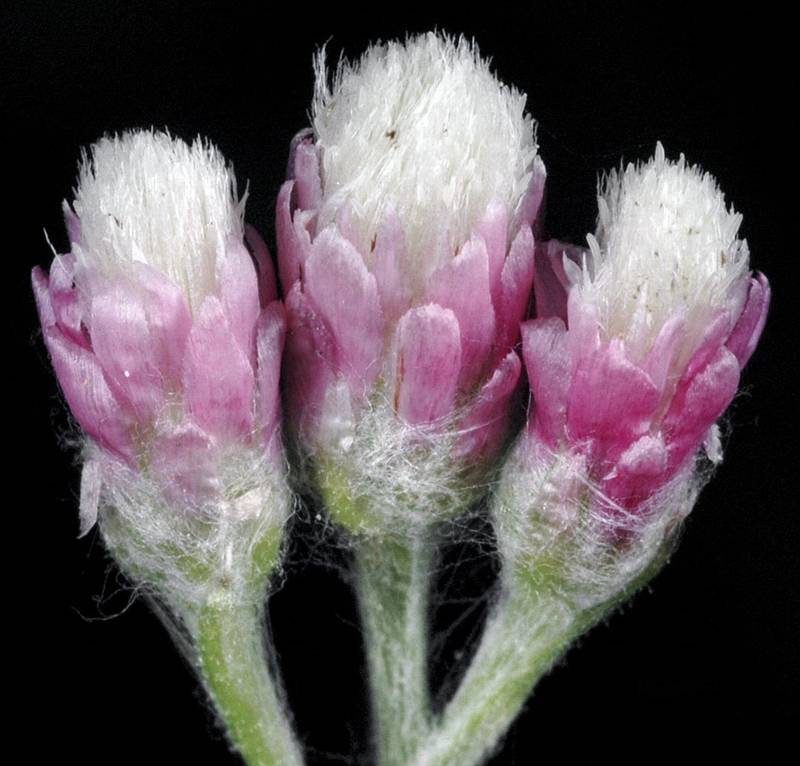|
|
narrowleaved pussytoes
|
| Dioecious, mat-forming, stoloniferous perennial 5-40 cm. tall; stolons up to 10 cm. long, decumbent; upper surface of the stems with stalked glands, the hairs white or purple. |
Perennial from a short, woody base, the stems clustered, 3-15 cm. tall. |
Leaves 1-nerved; upper surface of the leaves covered with silvery-white hairs; basal leaves spatulate or oblanceolate with a wedge-shaped base; cauline leaves linear, alternate. |
All linear and silky pubescent, the basal ones 2-8 cm. long and 1-2 mm. wide, the cauline ones numerous and well developed, gradually reduced upward. |
Heads several in a sub-capitate cyme; pistillate involucres 4-10 mm. long; scarious portion of the involucre bracts white, straw-colored or light yellow. |
Heads several in a sub-capitate inflorescence only 8-15 mm. wide; pistillate and staminate involucres similar, 4-6 mm. high, glabrous to the base, the bracts scarious throughout, light to dark brown. |
Achene. |
Achene terete |
|
|
|
|
|
Separate from Antennaria luzuloides by the narrower leaves, shorter stems and darker involucre bracts. |
| June-August |
April-June |
| Dry to moist habitats, including meadows, ponderosa pine forest openings, rocky slopes, and floodplains from the lowlands to the alpine. |
Rocky slopes, flats, lithosol areas, and dry grasslands in sagebrush desert. |
Occurring on both sides of the Cascades crest in Washington, but more common east of the crest; Alaska to California, east to the Rocky Mountains and northern Great Plains, Great Lakes region, and eastern Canada.
|
Occurring east of the Cascades crest in Washington; Washington to Nevada, east to central Idaho.
|
| Native |
Native |
| Not of concern |
Not of concern |
A. alpina, A. anaphaloides, A. corymbosa, A. dimorpha, A. flagellaris, A. geyeri, A. howellii, A. lanata, A. luzuloides, A. media, A. microphylla, A. monocephala, A. parvifolia, A. pulcherrima, A. racemosa, A. stenophylla, A. umbrinella |
A. alpina, A. anaphaloides, A. corymbosa, A. dimorpha, A. flagellaris, A. geyeri, A. howellii, A. lanata, A. luzuloides, A. media, A. microphylla, A. monocephala, A. parvifolia, A. pulcherrima, A. racemosa, A. umbrinella |
| |



